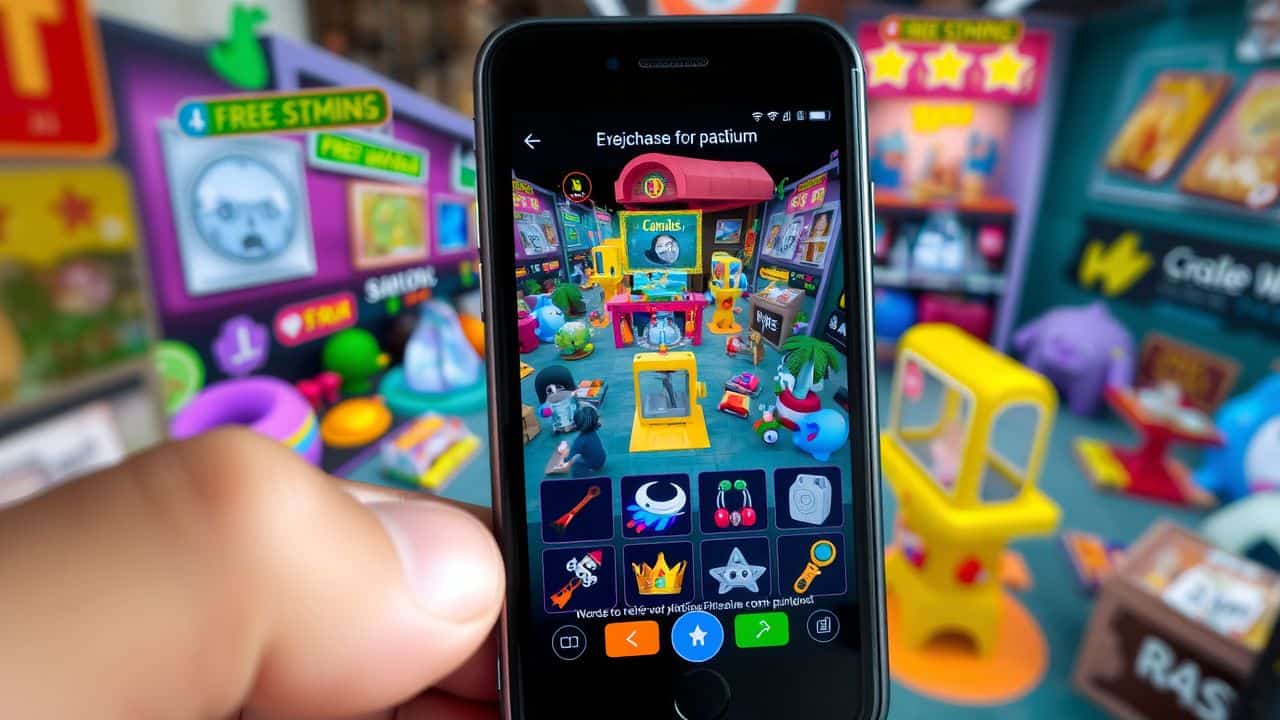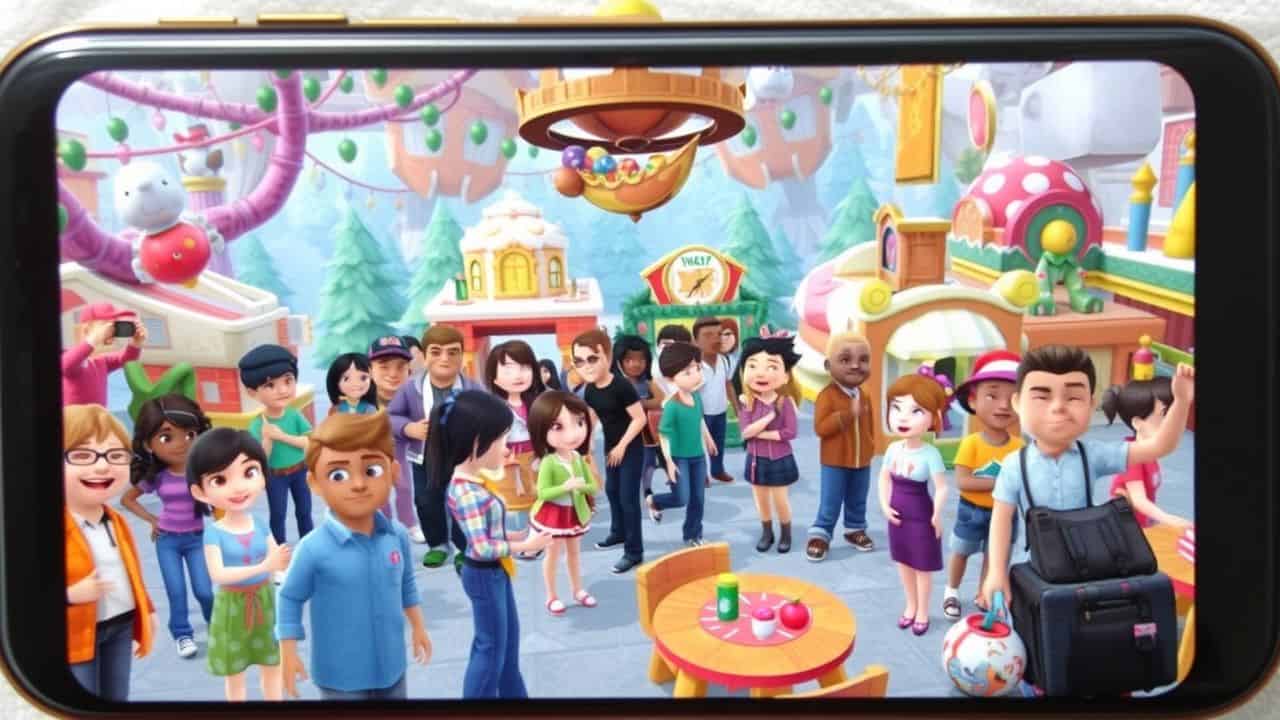Ever wondered what F2P means in gaming? You’re not alone. F2P stands for free-to-play, a model that lets you download and play games without paying upfront. This guide will explain F2P gaming, its pros and cons, and how it works.
Ready to learn about free gaming? Let’s go!
Key Takeaways
F2P means free-to-play, letting gamers download and play without upfront costs.
F2P games make money through in-game purchases and ads, not initial sales.
6.9% of F2P gamers have gaming disorder issues, with high spenders at greater risk.
Popular F2P games like Team Fortress 2 and Hearthstone offer free play but face challenges with “pay-to-win” dynamics.
F2P models increase gaming access but can lead to unfair advantages for paying players.
Table of Contents
Exploring the Concept of Free-to-Play (F2P)

Free-to-Play (F2P) games are a game-changer in the gaming world. They let you jump into the action without spending a dime upfront. It’s like getting a taste of ice cream before buying the whole tub! This model took off in the early 2000s, with “MapleStory” leading the charge in 2003.
F2P games are like a free buffet where the desserts cost extra.
But how do these games make money? Simple – they use a “freemium” model. You play for free, but can buy cool stuff in the game. Want a fancy hat for your character? There’s a price tag on that.
Need more lives? Open your wallet. It’s all about those microtransactions. Some games also show ads to rake in cash. This setup helps developers keep adding new content and rake in the big bucks.
Comparing Free-to-Play and Pay-to-Play Models

F2P and P2P models are like night and day in the gaming world. They shape how we play, pay, and interact with our favorite digital playgrounds.
Differences in Access and Costs

F2P and P2P games differ greatly in how players access them. F2P games are free to download and play right away. P2P games need an upfront payment before you can start. This makes F2P games more open to everyone.
They draw in bigger crowds because there’s no money barrier.
Costs work differently too. P2P games make money from their initial sales. F2P games rely on in-game purchases and ads. Players can buy virtual items or remove ads if they want. This model lets F2P games stay fresh with regular updates at no extra cost.
P2P games might charge for new content later on. Speaking of free games, many online casinos now offer F2P options. SweepstakesCasino.net reviews sites like Mega Bonanza, where you can play without spending real money.
Influence on Game Development and Player Experience

F2P games shake up how developers make and players enjoy games. Devs focus on hooking players fast and keeping them engaged long-term. They craft addictive gameplay loops and regular content drops to keep folks coming back.
For gamers, it’s a mixed bag. They get free access to tons of games but might face pay-to-win scenarios or constant ads. The player experience can vary wildly based on spending habits.
Game balance is a tricky dance in F2P titles. Devs must juggle fairness with profit, which affects player welfare. Short-term, costs of balancing and demand for items play big roles.
Long-term, game quality and network effects matter most. Changes to in-game items or fairness can really impact how players feel about the game. Up next, let’s dive into the perks of F2P gaming models.
Benefits of Free-to-Play Gaming Models

F2P games open doors for everyone. They let you jump in without spending a dime, making gaming a blast for all kinds of players.
Wider Accessibility and Inclusion
F2P games open doors for everyone. They let people play without spending a dime upfront. This means more folks can join in on the fun, no matter their budget. It’s like a free sample at the grocery store – you get to try before you buy.
Players from all walks of life can jump into these games and have a blast.
Inclusivity is a big deal in F2P. These games break down money barriers. They welcome players from different economic backgrounds. It’s cool because you can play with friends who might not have cash for pricey games.
Plus, you can test out various titles without breaking the bank. This model really shakes up the gamer lingo and culture. It’s changing how we think about gaming access.
F2P isn’t just a business model; it’s a gateway to gaming for millions.
Next, let’s look at how F2P keeps games fresh and players engaged.
Ongoing Game Enhancements and Community Engagement

F2P games keep players hooked with regular updates. Devs add new content based on what gamers want. This keeps the game fresh and fun. Players get excited about new features, characters, or levels.
It’s like getting a new toy without buying a whole new game.
Community events spice things up for F2P fans. Seasonal updates offer extra goodies to loyal players. These events bring folks together and make the game feel alive. Players chat on forums, share tips, and make friends.
It’s not just a game – it’s a hangout spot. This social aspect keeps people coming back, even if they’re not spending money.
Risks of Pay-to-Win Dynamics

Pay-to-win games can be a real bummer for players. These games let folks buy power-ups or special items with real cash. This gives them an edge over others who don’t spend money. It’s like bringing a gun to a knife fight – not fair at all! Studies show that 6.9% of F2P gamers have gaming disorder issues.
That’s a big deal.
High spenders (over €20 a month) are more likely to get hooked. It’s a slippery slope. You start with small purchases, then suddenly you’re dropping big bucks to stay competitive.
This can lead to addiction and money troubles. Plus, it ruins the fun for everyone else. Next up, we’ll look at how in-game purchases and ads affect the gaming experience.
Issues with In-Game Purchases and Advertisements
F2P games often lure players with shiny in-game items. But these purchases can add up fast! Some games push players to buy stuff to win or progress. This creates an unfair “pay-to-win” system.
Players who spend more cash get ahead, while others fall behind.
Ads in F2P games can also bug players. Pop-ups and video ads interrupt gameplay. They can ruin the fun and feel pushy. Plus, younger gamers might not understand the risks. Studies show loot boxes and other chance-based buys can lead to problem gambling.
It’s crucial for players to know these dangers and set limits on spending.
Showcase of Popular Free-to-Play Games

Let’s dive into some hit F2P games that have taken the gaming world by storm. These titles show how free-to-play models can create amazing experiences without breaking the bank.
Exploring Team Fortress 2

Team Fortress 2 (TF2) is a blast from the past that’s still kicking today. This free-to-play shooter lets you jump in without spending a dime. But here’s the kicker – some players look down on “F2P” folks.
It’s like a weird social ladder where how much you’ve spent matters.
I’ve played TF2 for years, and let me tell you, it’s a wild ride. You can upgrade to “Premium” by buying something small in-game. This gives you better item drops and more space for loot.
It’s not just about the perks, though. Some veteran players think spending cash makes you a “real” player. Crazy, right? But that’s the TF2 world for you – full of hats, rockets, and… social drama?
Analyzing Hearthstone
Hearthstone, a digital card game, offers both fun and challenges for free-to-play gamers. F2P players face tough odds in building strong decks and staying competitive. They rely heavily on Daily Quests for in-game resources, but these often fall short.
Seasonal Events and Login Bonuses help, giving extra rewards to regular players. Still, it’s an uphill battle.
Recent changes to pack openings have sparked hot debates in the Hearthstone community. New players struggle to catch up, given the game’s vast content and steep learning curve. For F2P folks, crafting becomes key to getting must-have cards.
With fewer packs to open, they must be smart about using their limited resources. It’s a tricky balance of strategy and patience in free gaming.
People Also Ask
What does F2P mean in gaming?
F2P stands for “free to play.” It’s a type of video game you can download and play without paying upfront. Think of it like a free sample at the grocery store. You get to taste before you buy.
How do F2P games make money?
These games often use in-game currency or virtual tokens. Players can buy these with real cash. Some games sell downloadable content or offer subscriptions. It’s like getting a free burger but paying for extra toppings.
Are F2P games the same as pay-to-win?
Not always. Some F2P games balance things well. Others might give paying players an edge. It’s a hot topic in esports. Genshin Impact, for example, lets you enjoy Teyvat without spending a dime.
Can I play F2P games on social media?
Absolutely! Facebook and WhatsApp host many F2P games. Some even use blockchain tech or NFTs. It’s like having a mini arcade in your pocket.
Are there F2P games in different languages?
You bet! F2P games come in many tongues. From Portuguese to Urdu to Indonesian, there’s something for everyone. It’s like a global potluck of gaming fun.
How can I find good F2P games?
Check out gaming sites or Twitch streams. Many journalists review F2P titles. You can also ask friends on LinkedIn or Telegram. It’s like treasure hunting, but for awesome free games!
References
https://gametree.me/gaming-terms/f2p/ (2024-07-21)
https://www.techopedia.com/definition/27039/free-to-play-f2p (2024-07-24)
https://www.larksuite.com/en_us/topics/gaming-glossary/free-to-play-f2p (2024-06-28)
https://www.sciencedirect.com/science/article/pii/S0040162522002116
https://www.konvoy.vc/content/the-good-and-bad-of-free-to-play (2023-01-27)
https://pmc.ncbi.nlm.nih.gov/articles/PMC9737990/
https://pmc.ncbi.nlm.nih.gov/articles/PMC9872537/
https://steamcommunity.com/app/440/discussions/0/540744935849464308/ (2014-06-24)
https://www.hearthstonetopdecks.com/depth-look-hearthstone-free-play-experience/
